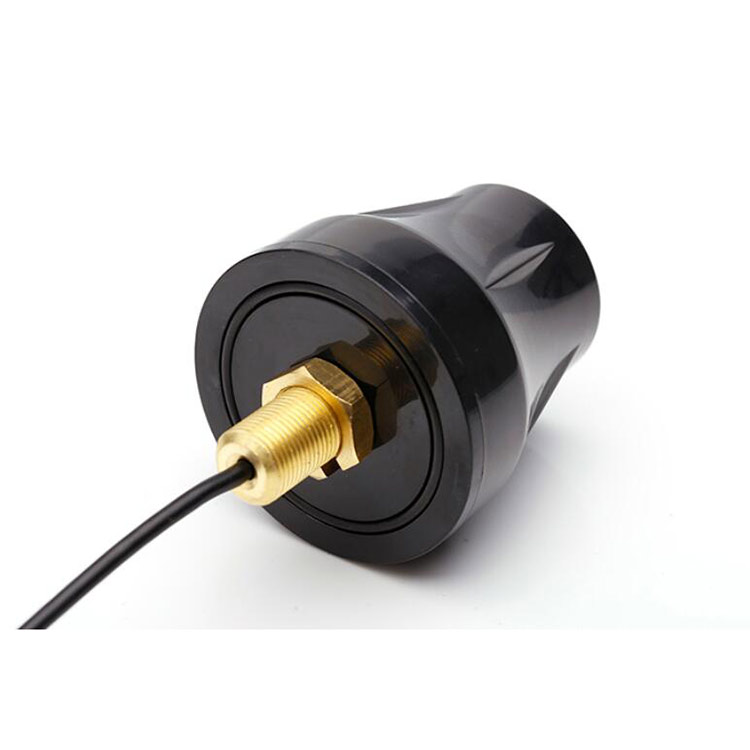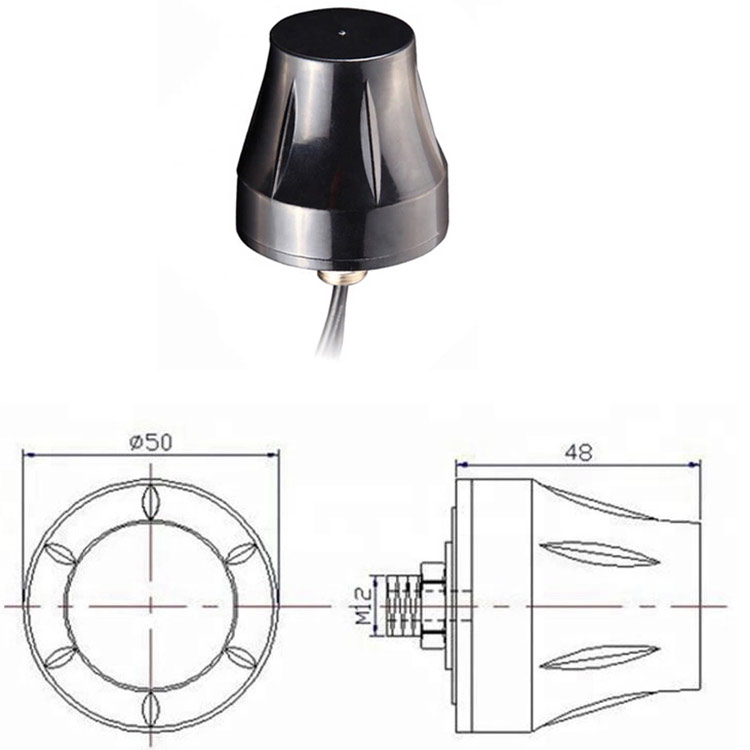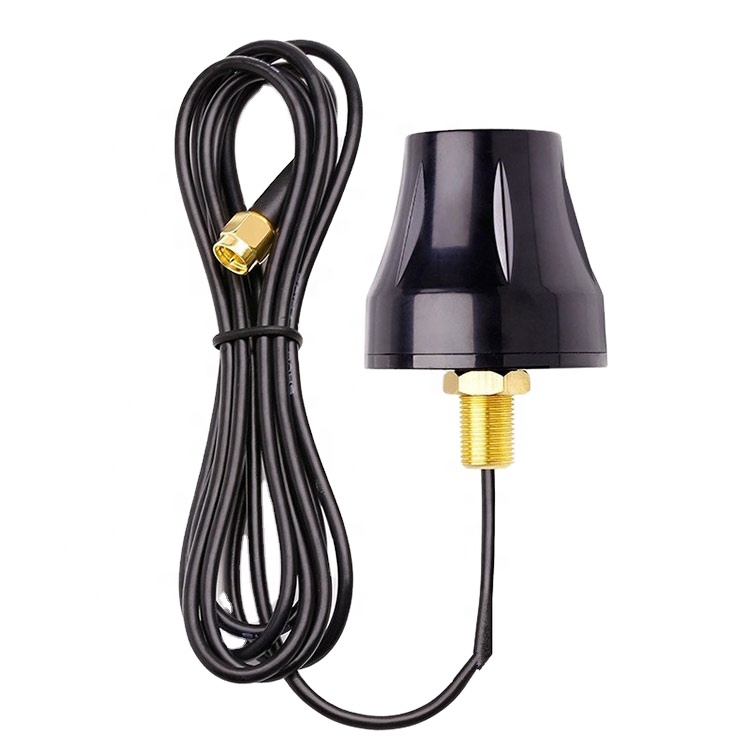The screw-mount waterproof GPS antenna is not a general-purpose component; it is a precision tool deployed in applications where its specific advantages—external mounting, ruggedness, and high performance—are absolutely essential. Its use cases are diverse, spanning land, sea, and air, and its future evolution is closely tied to advancements in satellite navigation technology itself.
Applications:
Marine Navigation: This is a classic and critical application. On everything from small sailboats to massive container ships, reliable GNSS is a matter of safety. The antenna is typically mounted on the radar arch or atop the pilot house, providing a clear 360-degree view of the sky. Its waterproof (and specifically saltwater-proof) construction is vital in the corrosive marine environment. It feeds chart plotters, autopilots, and AIS transponders, forming the backbone of the vessel's navigation suite.
Automotive Telematics and Fleet Management: The backbone of the logistics industry. Thousands of trucks, delivery vans, and buses are equipped with these antennas to provide real-time location data for route optimization, fuel monitoring, driver behavior analysis, and theft recovery. The screw-mount provides a secure, permanent attachment that can withstand millions of miles of vibration and exposure to all weather conditions. They are also used in emergency vehicles (police, fire, ambulance) where reliable location data is critical for dispatch and response.
Precision Agriculture: Modern farming relies on centimeter-level accuracy for guided tractor systems, variable rate application (of seed, fertilizer, pesticide), and yield mapping. This high-precision GNSS (often using RTK or PPP corrections) requires a high-performance antenna capable of receiving multiple frequencies (L1/L2/L5). The antenna is mounted on the roof of the tractor or sprayer, enduring dust, chemicals, heat, and intense vibration.
Surveying, Mapping, and Construction: Surveyors use these antennas mounted on poles or fixed base stations to provide the reference data for creating highly accurate maps and guiding construction equipment. The demand here is for the highest possible accuracy, driving the need for multi-band, multi-constellation antennas that can mitigate atmospheric errors and provide rapid, reliable fixes.
Aviation: While commercial aviation uses more specialized antennas, the general aviation and Unmanned Aerial Vehicle (UAV/drone) markets are significant users. On drones, a small, lightweight screw-mount antenna provides the precise positioning required for autonomous flight, mapping, and photography. For general aviation aircraft, they serve as a primary or backup source of position data for navigation displays.
Timing and Synchronization: This is a less visible but utterly critical application. Cellular base stations (4G/5G), electrical power grids, and financial trading networks all rely on precise time synchronization, often derived from GPS. These antennas are mounted on towers or rooftops, providing a continuous, stable time reference that is immune to jitter and drift, ensuring the smooth operation of critical infrastructure.
Future Trends:
Multi-Band and Multi-Constellation Support: The future is multi-frequency. The next generation of high-precision applications requires antennas that can simultaneously receive L1, L2, and L5 signals from all available constellations (GPS, GLONASS, Galileo, BeiDou, QZSS). This allows for advanced error correction and faster convergence to centimeter-level accuracy. Future antennas will feature radiating elements (like wideband patches) and filters designed to cover this entire spectrum efficiently.
Integrated Anti-Jamming and Anti-Spoofing (AJA): The threat of intentional GPS jamming and spoofing is growing. Future high-end screw-mount antennas will increasingly incorporate built-in protection. This can take the form of controlled reception pattern antennas (CRPA) that use multiple elements to form nulls in the direction of jammers, or integrated filters and algorithms to detect and mitigate spoofed signals. This will be essential for military, critical infrastructure, and autonomous vehicle applications.
Miniaturization and Aesthetic Integration: While performance will remain key, there is a trend towards lower-profile, more aesthetically pleasing designs that blend better with vehicle rooflines. Advances in materials and RF design will allow for smaller radomes without compromising performance.
Enhanced Connectivity and "Smart" Antennas: We may see the emergence of "smart antennas" that integrate more functionality beyond the LNA. This could include built-in correction receivers (e.g., for SBAS or L-band correction services), diagnostic capabilities (e.g., reporting signal strength, health status, and even detected jamming), and standardized digital outputs (like Ethernet) in addition to RF outputs.
Improved Materials and Sustainability: Research into new radome materials that offer even better RF transparency, impact resistance, and UV stability will continue. There may also be a growing focus on the sustainability of materials used in construction and the recyclability of the product at end-of-life.
The screw-mount waterproof GPS antenna will remain a vital component in the PNT ecosystem. Its future is not one of replacement but of enhancement—becoming more capable, more intelligent, and more resilient to meet the ever-increasing demands for accuracy, reliability, and security in a world that runs on precise location and timing.
Conclusion
The screw-mount waterproof GPS antenna stands as a testament to the principle that optimal performance often requires a purpose-built, dedicated solution. In a world increasingly moving towards miniaturization and invisible integration, this antenna type defiantly asserts the enduring value of external, ruggedized design where it matters most. It is the unsung hero of the GNSS world, providing the critical, reliable link to the satellite constellations for applications where failure is not an option—where a lost signal could mean a stranded vessel, a misdirected fleet, a ruined harvest, or a failed critical infrastructure node.
Its overview reveals a device engineered not for convenience but for excellence. Its design and construction are a masterclass in balancing electromagnetic precision with mechanical fortitude, combining a high-performance radiating element and LNA with a shell capable of withstanding the planet's harshest conditions. Its working principle is elegantly simple yet profoundly effective: capture the faintest of signals, amplify them at the source, and deliver a clean, strong signal to the receiver, all while being powered through the very cable that carries the data.
The advantages it offers are compelling and specific: unparalleled reception quality thanks to an unobstructed sky view, exceptional durability against environmental assault, and superior noise immunity. These come, however, with inherent challenges—higher cost, more complex installation, and a permanent physical presence on the exterior of a vehicle or structure. These are not drawbacks but rather the necessary trade-offs for achieving a level of performance that embedded antennas simply cannot match.
Its applications are as diverse as they are critical, forming the foundation for modern marine navigation, global logistics, precision agriculture, and the timing of our digital world. Looking forward, its evolution is clear. It will not be made obsolete but will instead advance to embrace multi-band and multi-constellation signals, incorporate sophisticated anti-jamming technologies, and perhaps even evolve into a more intelligent, connected device.
In conclusion, the screw-mount waterproof GPS antenna is far more than a simple component. It is a high-performance insurance policy against signal loss. It is the embodiment of reliability in an unpredictable world. For system designers and engineers working in demanding fields, the choice to use one is a definitive statement that performance, accuracy, and resilience are the highest priorities. It remains, and will continue to be, the gold-standard form factor for ensuring that a vital line of communication to the heavens above remains open, regardless of what happens here on Earth.




































































 Language
Language
 En
En Cn
Cn Korean
Korean

 Home >
Home > 








 18665803017 (Macro)
18665803017 (Macro)













